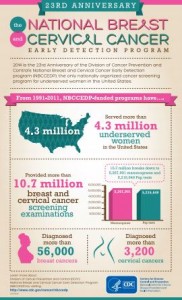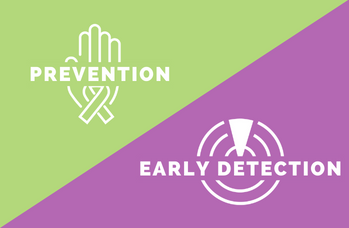National Breast & Cervical Cancer Early Detection Program Celebrates 23 Years
08 August, 2014
 23rd Anniversary. It's a bit of an odd milestone to celebrate, when compared to the more rounded numbers 20 or 25. But in this era of healthcare reform and economic fluctuation, it's a great time to take a look at the only nationally organized cancer screening program for underserved women.
23rd Anniversary. It's a bit of an odd milestone to celebrate, when compared to the more rounded numbers 20 or 25. But in this era of healthcare reform and economic fluctuation, it's a great time to take a look at the only nationally organized cancer screening program for underserved women.
The National Breast & Cervical Cancer Early Detection Program (NBCCEDP), operated as Women's Health Connection (WHC) in Nevada, has made strides in reaching uninsured and underinsured women to educate them on the importance of breast and cervical cancer screening, and in turn actually screening them. For a snapshot of this CDC program's work over the past 23 years, take a look at this infographic.
A series of new documents on the program, 13 to be exact, has also recently been released. They include discussion starting from the program’s implementation to successes in service delivery and follow-up, partnerships, use of data to effectively manage the program and increase reach, quality control, education and outreach, and the impacts of health reform. All of the documents are available here.
You May Also Like

CELL Series: Expanding Access to Cervical Cancer Screening: The Role of Self-Collection
03.12.2025
Join us for a discussion on the emerging role of self-collection for cervical cancer screening and its potential to improve access, especially in

CELL Series: Expanding Access to Cervical Cancer Screening: The Role of Self-Collection
03.12.2025
Join us for a discussion on the emerging role of self-collection for cervical cancer screening and its potential to improve access, especially in

2025 Cervical Health Month Resources
12.02.2024
Cervical cancer incidence and mortality is relatively low compared to some other cancers in Nevada.